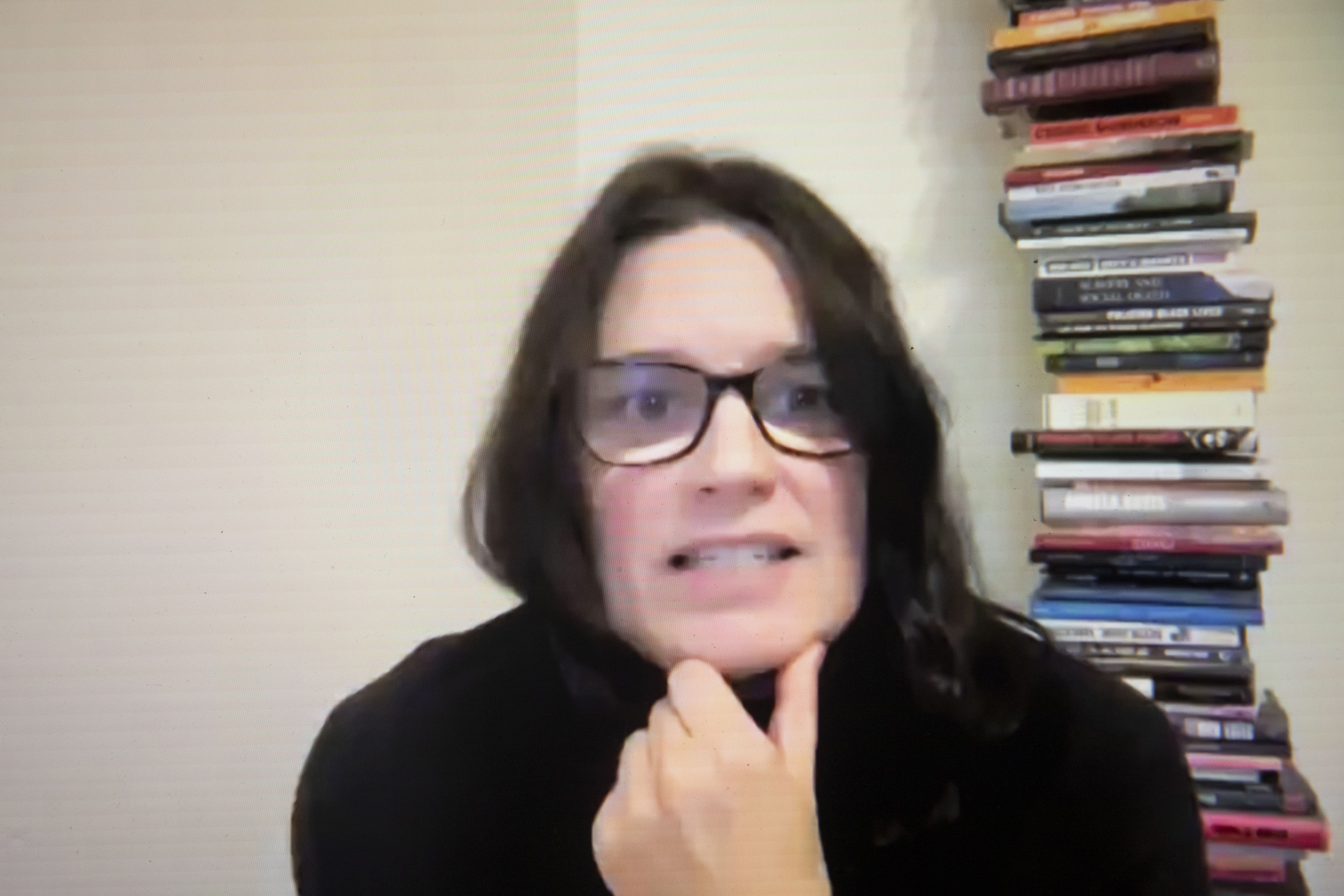
Leanne Betasamosake Simpson (pictured) spoke with fellow Indigenous artist and academic Tania Willard as part of the Mahindra Humanities Center series “Art, Activism, and Climate Change.”
Kris Snibbe/Harvard Staff Photographer
Listening to air, water
Indigenous artist discusses how she blends work, climate change activism
Leanne Betasamosake Simpson’s latest writing project, “Theory of Water,” asks what it means to listen to water. The Indigenous artist and scholar’s work is vitally connected to climate, much of it focusing on communication with nature and the effects of colonialism.
“The common thread of all of these works is a refusal of racial capitalism, dispossession, the nation state, heteropatriarchy, white supremacy, [and] all of the structures that have brought us to this kind of present moment of climate apocalypse,” said Simpson, who spoke in a virtual conversation held Jan. 17 with fellow Indigenous artist and academic Tania Willard as part of the Mahindra Humanities Center series “Art, Activism, and Climate Change.” The events, co-sponsored by Radcliffe Institute, bring together prominent figures in the arts and humanities to discuss their commitment to fight climate change through their work and activism.
“Theory of Water” takes its inspiration from the works of interdisciplinary Anishinaabekwe artist Rebecca Belmore and Canadian poet Dionne Brand. Belmore famously created a giant wooden megaphone (more than 6 feet across at the bell) as an art installation that was displayed in various locations in Canada and the U.S. That work, called “Ayum-ee-aawach Oomama-mowan: Speaking To Their Mother,” allowed speakers’ voices to echo up to nine times as they addressed their native land. A second project called “Wave Sound” flipped the concept, turning a megaphone into a kind of listening horn to amplify the sound of water and shoreline.
Simpson, a member of the Alderville First Nation and an independent scholar, spoke about connecting to her ancestral land by lying on the ground and allowing the sounds of nature to envelop her. “Through these rehearsals, ‘Wave Sound’ amplifies the voices of water to cut through the noise of colonialism,” she said. “It works in concert with my great-grandparents praying and carrying water, and with those yet to be born.”
Simpson also presented four pieces she worked on and released during the pandemic before diving into conversation with Willard, who read a poem called “Habitat Violations.” Willard, a member of the Secwépemc, talked with Simpson about her work and its connections to climate change, and the two artists discussed Indigenous relationships with the land and how that can translate into political activism.
Simpson said that “Ayum-ee-aawach Oomama-mowan” — Belmore’s first project — was especially important to her because it directly related to the 1990 Oka Crisis, an uprising by a group of Mohawk people near Montreal to protect their sacred land against a proposed golf course expansion and townhouse development. Echoes of that protest were seen during the Dakota Access Pipeline protests, she noted.
The discussion also touched on Simpson’s belief that her work is in collaboration with the land. “It’s not just that my art or my academic practice is a collaboration with these beings in the natural world,” the scholar said. “I feel like I’m made up of my relationships with these non-human beings, and I’m constantly in conversation … with them.”
This idea of collaboration and conversation with the land also exists with her language and culture, Simpson added. Most of her Indigenous language is in the form of verbs, always in motion and in collaboration with different forms of life.
Meanwhile, she noted that the toll climate change already has taken on cultural customs and ways of life is visible. The ash tree is important to many Indigenous peoples. Native to eastern Canada and much of northeastern and midwestern U.S., it has been heavily affected by climate change. For this reason, it was important to Simpson to repatriate an old, handmade basket made of black ash.
“With so much at stake for our planet, the work of artists and activists is essential in reaching and moving the public, scientists, policy makers, and journalists,” said Susannah Clark, director of the Mahindra Center and the Morton B. Canal Professor of music.




